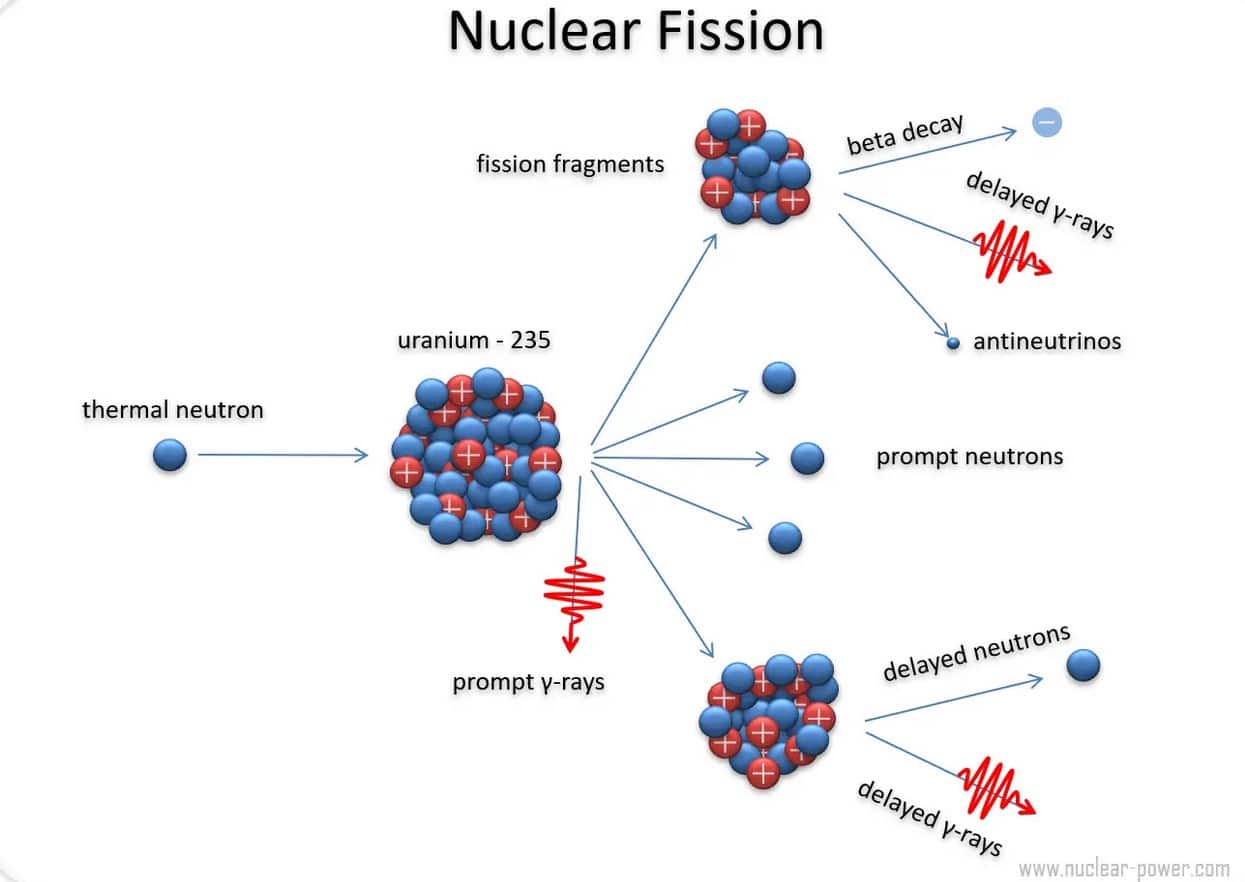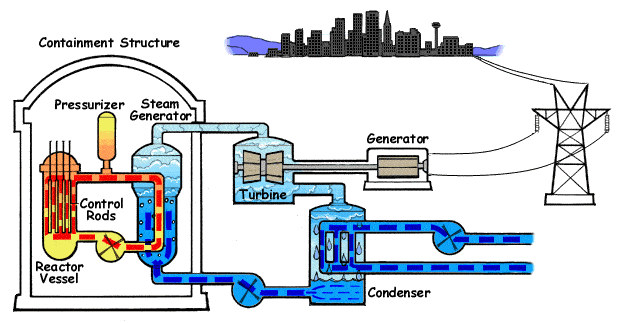Fission Energy

This is the traditional form of nuclear energy, where very large atoms like uranium and plutonium are split by neutron bombardment, and the reduction in mass is released as energy.
The energy released in nuclear fission generates heat which is then used to generate steam to drive a turbine and generator to put electricity on the grid.
Exceedingly large atoms like uranium are split into other smaller atoms, releasing energy in the process, and this has been going on for over sixty years. However, a large section of the public cannot be persuaded about the benefits of fission energy, for two key reasons.
Nuclear fission reactions can, and do, get out of control, as shown by Three Mile Island, Chernobyl, and more recently Fukushima. However, if you consider the sheer number of nuclear power plants worldwide that are all run without incident then the run away risk are very low. Three Mile Island was operator error, Chernobyl was due to the Soviet obsession with state secrecy – even withholding vital risk information from the plant operators, and Fukushima was a monumental blunder of positioning the plant too near the sea and too low down, and amazingly not considering the possibilities of Tsunamis in one of the most actively volcanic and seismic regions of the globe!
Another major downside thought is that nuclear fission powerplants also produce copious amounts of highly radioactive nuclear waste, some of which will remain hazardous for tens of thousands of years, creating significant disposal or safe storage problems. Safe storage is easily achieved but public opinion has yet to be convinced.
Nuclear Electricity
Making electricity from neutrons, the basis of nuclear fission power, has now been understood for around seventy years. The neutron flux causes more than enough heating, in a blanket of surrounding material, typically cooled with water to generate the steam needed to drive turbine generators. In conventional nuclear fission powerplants, the hot fluid transfers its heat to generate superheated steam. Feeding the steam into a turbine drives a generator which produces the electricity to feed the grid. All along the way, in a rather tortuous scheme, there are numerous significant efficiency losses. So, you need to generate enormous amounts of energy to compensate and this is what nuclear fission can easily do. One kilogram of uranium-235 can produce the same energy as 2.7 million kilograms of coal.

So is Nuclear Power Green?
Yes and no. In operation they produce little if any CO2 but the construction of these very large powerplants does involve a huge amount of energy and generates a lot of CO2 due to the massive amounts of concrete and steel necessary.
Why use Uranium and Plutonium for Nuclear Power?
The choice of uranium and plutonium for nuclear power generation instead of the far safer and more plentiful thorium was simple – you can make nuclear weapons with uranium and plutonium, but not with thorium. If thorium had been selected instead then there would have been no nuclear meltdowns because thorium reactors are self limiting and can’t run away. See Fission Energy with Thorium for more details.
